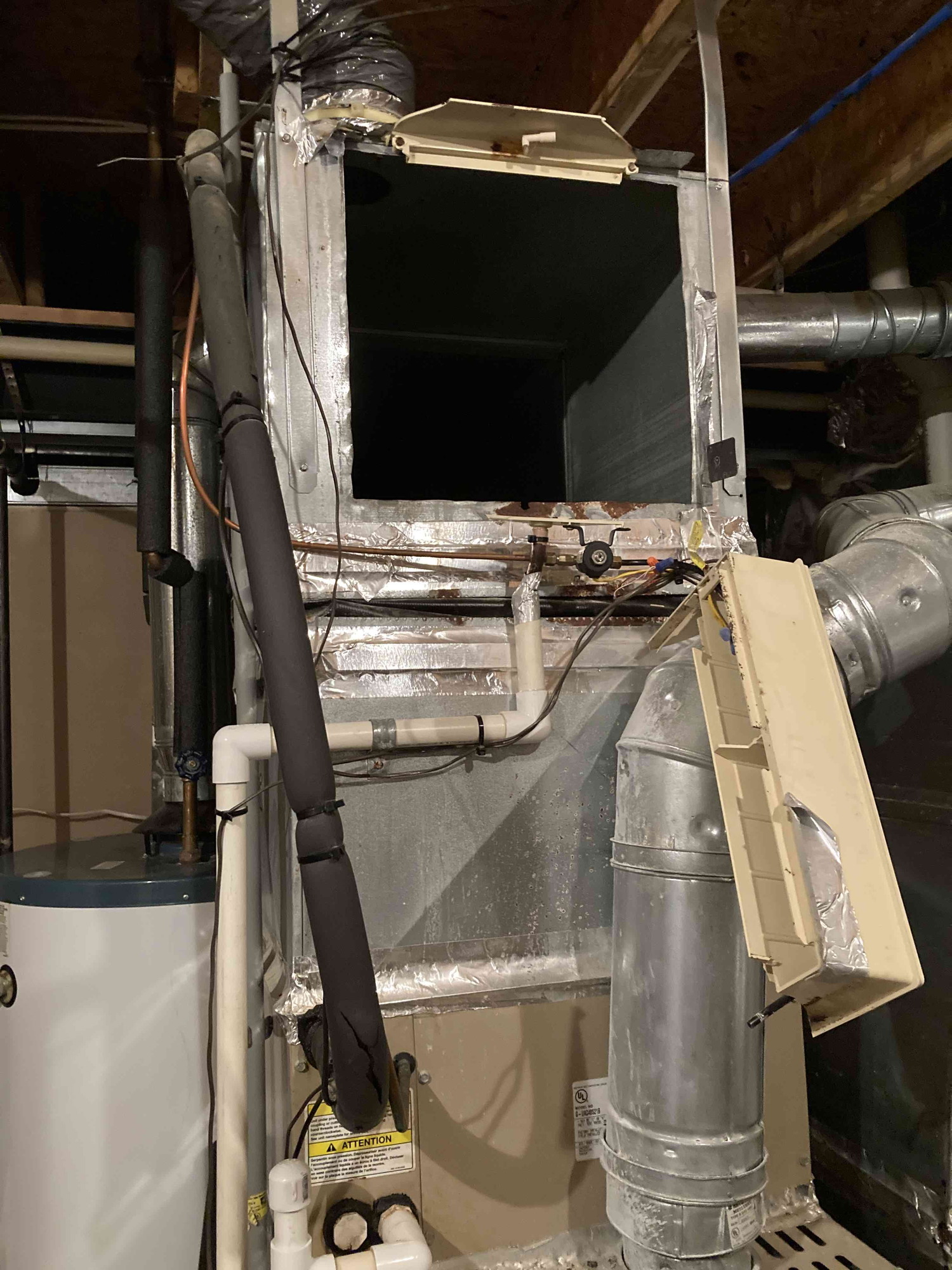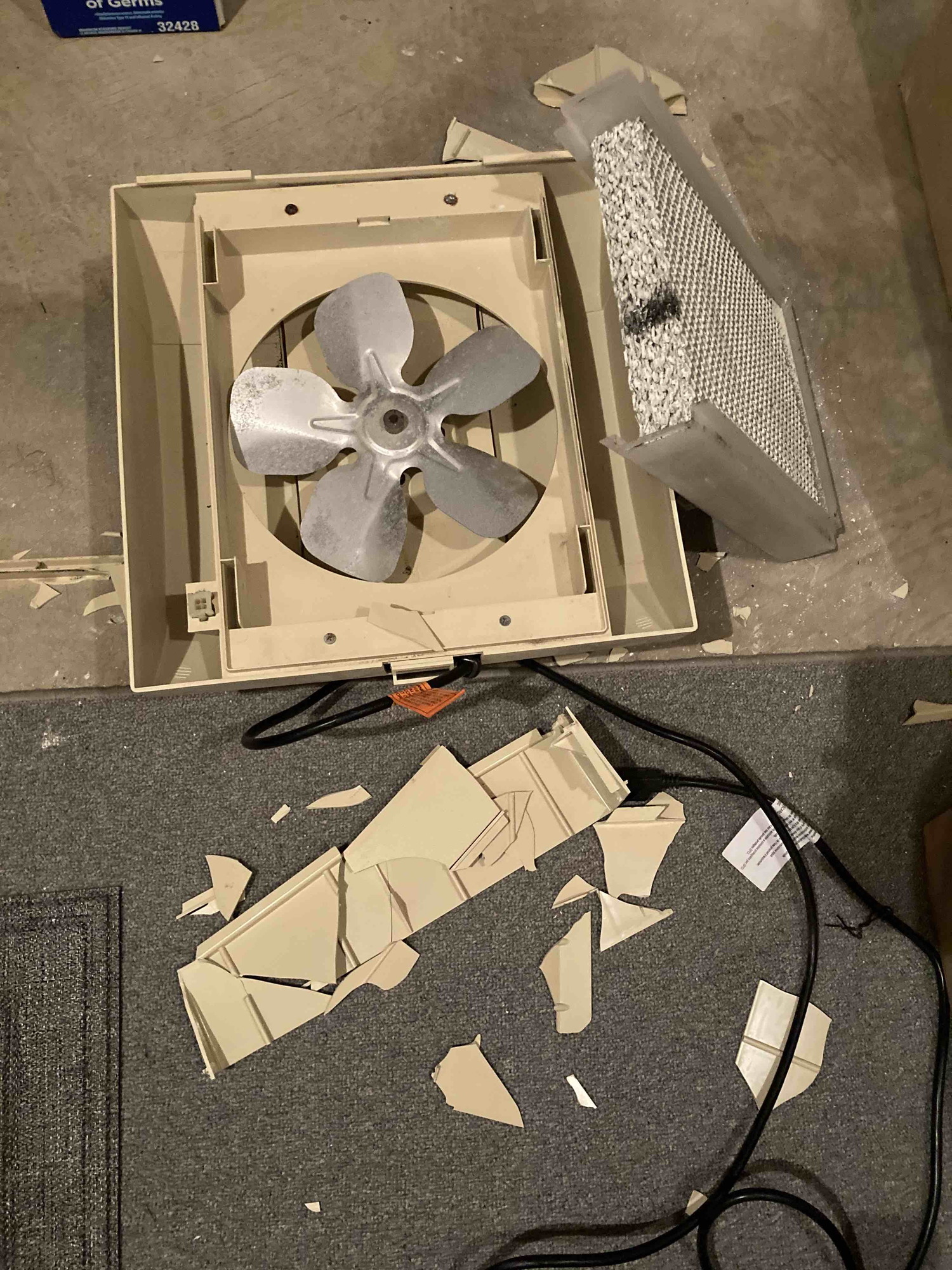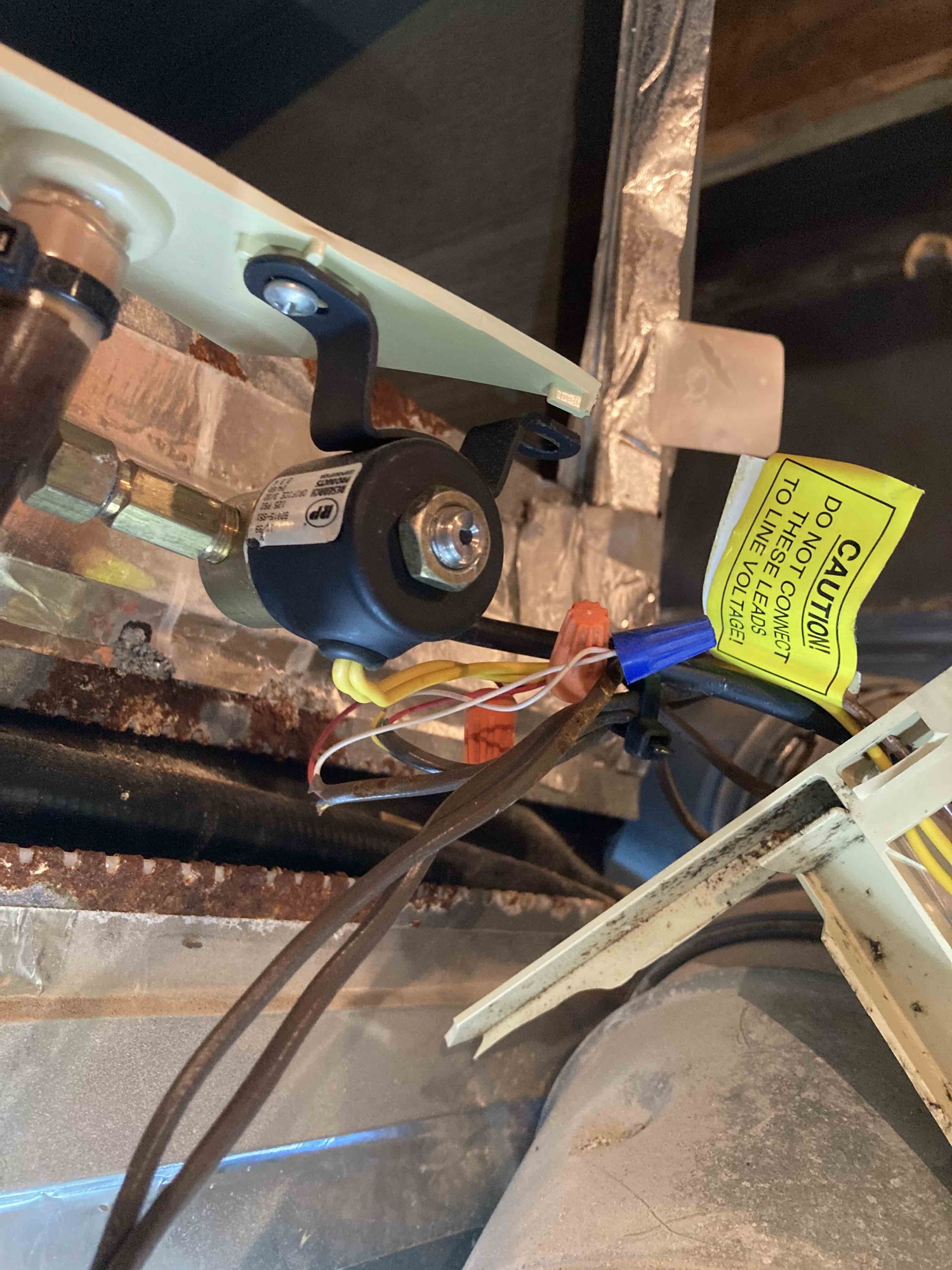When we rented a 1st floor flat of a 2 family home built in 1935 or so in Schenectady, NY, it had more paint than insulation in the walls and pulley windows, etc. One season I had to cover the windows with clear plastic sheeting from the inside because you swore a window was open when the wind was blowing. It had to be about a 8 degree difference from the floor to 6 feet up during the heating season. With warm air heat I had to use a Sears stand alone humidifier and it usually took more than 3 gallons a day, up to five a few times when it was 5 degrees outside. Never had condensation on the windows and lived there three years. I had three homes with forced air heat, Saratoga Springs, NY, Algonquin, Il, Cicero, NY. They all needed some humidification. My oldest son had allergy/asthma type problems, therefore, electronic air cleaners and humidification. If not, he would cough all night long in his sleep. Hydronic heating it probably would have been much less of a problem for him.
It's tough dealing with those issues in a rental- I've lived in apartments that were in that range of air & heat leakiness too, and it sucks.
For ~5 years I shared a ~2200' two floor apartment in Cambridge MA with 1850s (not a typo- mid 19th century) vintage single pane double hungs, no storms, a dry stacked stone (only crumbling face-parged mortar) & brick foundation, no insulation in the walls or attic, heated by a poorly retrofitted oil fired ducted hot air furnace (installed in the 1930s). On sunny days it was possible to see sunlight through the foundation at the basement door bulkhead. In summer the humidity in the basement was high enough due to the air leakage that mycelium sometimes coated parts of the rat-slab floor, with a number of different mushroom species popping up by late summer.
Under rent control the slumlord had no incentive to fix things, and anything that I or my housemates did on our own to improve things had to be sub-code to not result in a rent increase after the annual rent control board inspection. I did some amount of air sealing, and minor repairs. When pipes in the basement froze & burst I repaired them without informing the owner or the city. When the ignition on the 1930s vintage oil burner was failing I installed a late-1970s vintage flame retention type burner that I had trash-picked in front of a house down the block that had just converted to gas, swapped out the nozzle from the antique, and eyeballed the flame to adjust the air mixture. The main fuse in the 1910s vintage fuse box was 25 amps, and given the condition of the wiring I didn't dare replace it with something bigger. In summer we had to turn off the window air conditioners to run the toaster without blowing the fuse.
But it was cheap- the oil bills exceeded the rent during the winter, but was overall an uncomfortable and unhealthy place to live. By 1990 the neighborhood was becoming gentrified, the slumlord sold the place to a developer who pretended to live in one of the three apartments, which allowed him to take it off rent control. I moved out before it all came to a head, but the new owners did a cosmetic upgrade on the place inside & out, converted it into a 3 condominium, and built a 2-unit condo in the back yard. (There were a couple of people in both the city and the financing bank on that deal who went to jail for various types of fraud in those transactions too, but that's a completely separate story.)
I haven't followed NYSERDA's incentive structures for residential rental properties very closely, but when the tenants are paying the utility bills there isn't much in it for the landlords to fix even fairly egregious deficiencies like that apartment in Syracuse. For NY to meet even it's none-too-ambitious greenhouse gas reduction goals they're going to have to deal with the existing large stock of older leaky rental apartments.
But hot air can still work without active humidification. On a mid-century modern retrofit I consulted on a handful of years ago they had 9 tons of AC-sculpture retrofitted in 2 separate units on top of a barely insulated flat roof. Heating was radiant floor in the lower level (walk-out nicely finished basement) and radiant ceiling on the main level all run by a the original circa 1960 200BTU/hr-out cast iron gas burner. Whenever the AC was running it was deafening. When the heat was running the place stunk of bitumen roofing.
As part of the retrofit I suggested they build a low-pitch gabled roof over the existing roof that had maybe R10 of vermiculite (yeah, the asbestos-rich stuff) and R2 of asphalted fiberboard under the torch-down for insulation. They got rid of the above-the-roof duct sculptures, had an engineer run the Manual-J/S/D, and installed a 60,000 BTU/hr 2-stage condensing gas furnace married to a modulating 3 (or 4?) ton AC, serving 4000'+ of conditioned space. They also installed heat recovery ventilation (HRV) utilizing the same ducts, duty-cycling the HVAC air handler on it's lowest speed.
There was NO humidifier, in location with about the same wintertime temperatures & humidity as Albany NY. The place is fine- it keeps up without a problem at -10F, the air handler is whisper quiet even at high stage, and the indoor RH only drops below 35% in winter when cranking up the HRV to it's max (~50% above ASHRAE 62.2 levels.) Most of the time the indoor air quality was fine a the lowest ventilation rate (substantially below ASHRAE 6.2.) but the ventilation rates were now in their control, not much affected by wind or outdoor temperature.
It went from being one of the least comfortable houses the owners had ever lived in to the MOST comfortable house, and their prior house was heated primarily with gypcrete radiant floors. It forever changed their impressions of what hot air heating COULD be, but this was only because it wasn't the typical 3-5x oversized beast with an unbalanced & leaky duct system.
It's likely that this house in MD also has a leaky house with an oversized furnace and leaky unbalanced duct system, but the solution to dry indoor air is fixing the leaky house and leaky ducts, not pouring in moisture with a humidifier.






